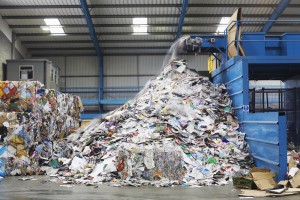The Packaging Waste Regulations In Plain English
Understanding the Packaging Waste Regulations in Simple Terms
PRNs, eligibility, non-compliance, and other things you might not know about...
At Kite, we pride ourselves on being experts in our field—whether it's designing innovative packaging solutions to solve long-term problems, improving customer service to meet tight deadlines, or helping businesses navigate the complex world of "The Packaging Waste Regulations."
In this post, we'll break down the basics of these regulations and explain why they matter for any company that qualifies. We’ll also share some practical tips to help you prepare for your next assessment.
A Brief History
 The Packaging Waste Regulations (officially called The Producer Responsibility Obligations (Packaging Waste) Regulations 2007 and Amendments) have a complicated history, with multiple agencies involved. In simple terms, these regulations function as a tax on packaging use, designed to fund recycling efforts and reduce the environmental impact of packaging waste.
The Packaging Waste Regulations (officially called The Producer Responsibility Obligations (Packaging Waste) Regulations 2007 and Amendments) have a complicated history, with multiple agencies involved. In simple terms, these regulations function as a tax on packaging use, designed to fund recycling efforts and reduce the environmental impact of packaging waste.
- The UK generates millions of tonnes of packaging waste annually, much of which ends up in landfills.
- The regulations were introduced in response to an EU directive from 1994.
- DEFRA (Department for Environment, Food and Rural Affairs) is responsible for drafting the rules.
- The Environment Agency enforces the regulations and can take legal action against non-compliant businesses.
TIP! These regulations are legally binding. They apply to all businesses that introduce packaging into the UK system, regardless of whether they collect waste. Read on to find out if your business is affected.
Who Is Eligible?
The main goal of the regulations is to hold UK companies accountable for the recycling of packaging waste and its associated costs. However, not every business is required to comply. Small businesses with a turnover of less than £2 million are typically exempt.
But if your company:
- Is based in the UK and handles packaging as part of your operations,
- Has a turnover of £2 million or more,
- Handles over 50 tonnes of packaging per year (excluding exported packaging),
then you must register with the Environment Agency and submit annual reports detailing the packaging you've introduced into the UK.
What Are PRNs?
PRNs (Packaging Recovery Notes) may sound intimidating, but they’re actually quite straightforward once you understand the basics.
- PRNs serve as proof that packaging has been recycled.
- One PRN is issued for every tonne of recycled packaging.
- Reprocessors can sell these notes on the open market, using the revenue to support new recycling initiatives.
- PRN prices can vary significantly depending on market conditions. For example, in early 2013, plastic PRNs were priced at around £12, but by the end of the year, they had risen to £70. This fluctuation makes budgeting for compliance a challenge for many businesses.
Your PRN obligation depends on factors such as the weight of packaging you handle, your activity percentage, and the national recycling target (which was approximately 75% in 2013).
Activity percentages reflect the role your business plays in the supply chain. For instance, in the case of a tin of beans:
- Manufacturer – Produces tin sheeting – 6%
- Convertor – Folds and presses into a tin can – 9%
- Packer/Filler – Fills with beans and uses additional packaging – 37%
- Seller – Supplies the product to the end user – 48%
- End User – Consumer of the packaging – 0% (but 100% if the packaging is imported)
To calculate your PRN obligation, use the formula:
Packaging Weight (Tonnes) × Activity Percentage × National Target (≈75%) = PRN Obligation
Now that you understand PRNs, let’s look at what packaging is considered obligated under the regulations. This includes anything used for containment, protection, handling, delivery, or presentation of goods—essentially everything except for customer or supplier-owned packaging, reused packaging (unless imported), or packaging for exported goods.
Compliance Process
Before registering with the Environment Agency, your company must choose a method of compliance. There are two main options:
Allocation Method: If your turnover is between £2 million and £5 million, you can report your turnover from audited accounts and receive 30 PRNs per £1 million of turnover in the predominant material you handle.
Data Submission Method: If your turnover exceeds £5 million, you must assess all the packaging you’ve introduced into the UK and submit detailed data. PRNs will then be allocated accordingly.
The overall process involves:
- Applying the regulations to your business,
- Assessing the packaging you handle,
- Setting up a system to collect data,
- Gathering the data,
- Completing the calculations,
- Filling out the submission form,
- Registering your data,
- Purchasing and obtaining PRNs.
This is a lengthy and legally required process. Non-compliance can lead to fines or even prosecution. That’s why most businesses opt for a compliance scheme to simplify the process.
Kite Environmental Solutions
Kite’s compliance scheme, Kite Environmental Solutions (KES), takes a hands-on approach to managing the entire process. Unlike many schemes that simply register businesses, KES offers personalized support, expert guidance, and full assistance throughout the entire compliance journey.
For more information, visit the KES website or call 02476420088.
If you have any comments or would like to get in touch, follow us on Twitter - @kitepackaging
entryway table,console tables,narrow console table,modern console table,marble console table
Auxford furniture , https://www.auxfurniture.com